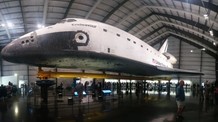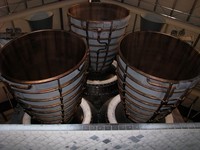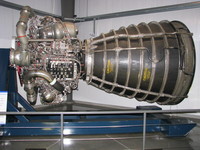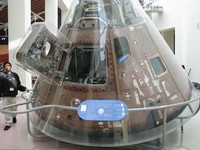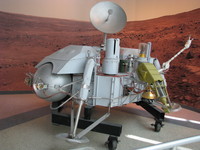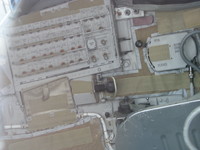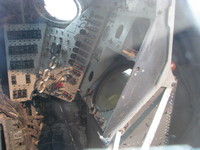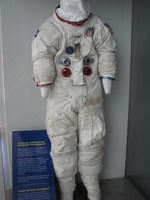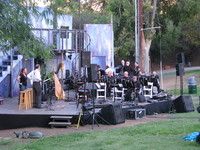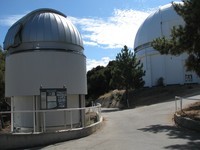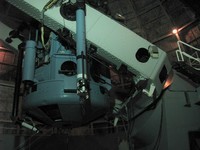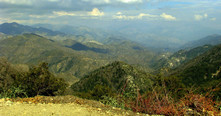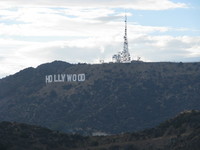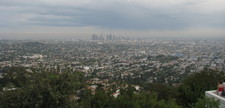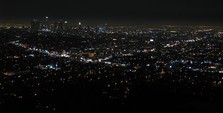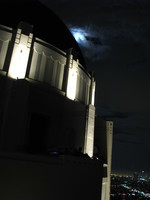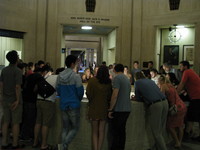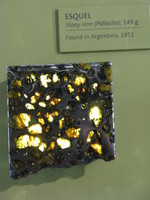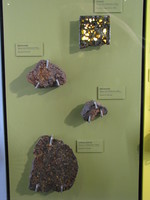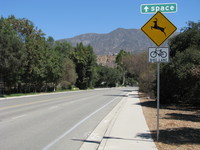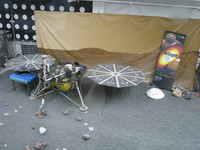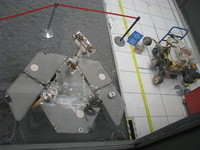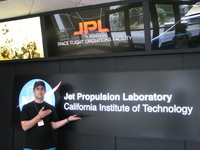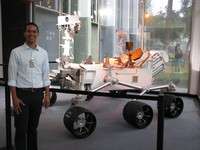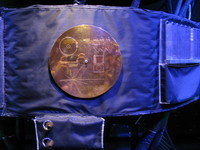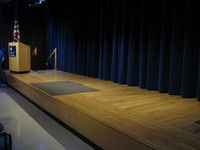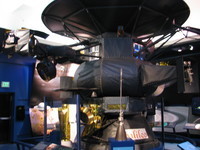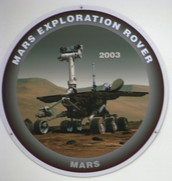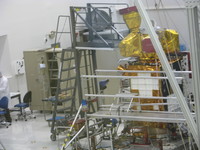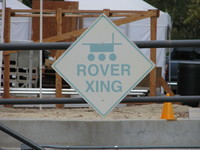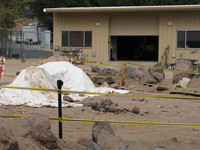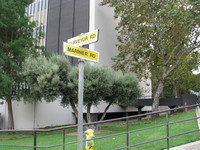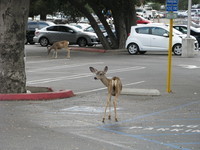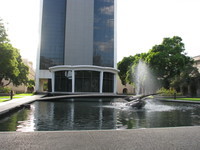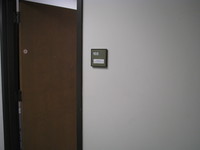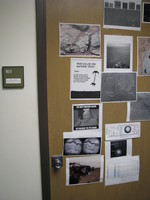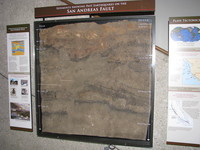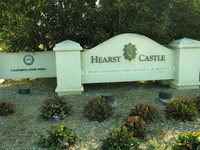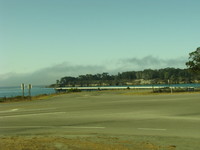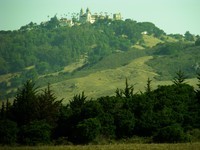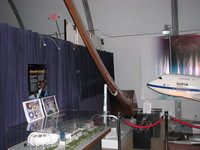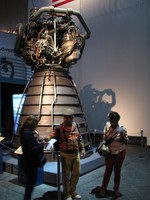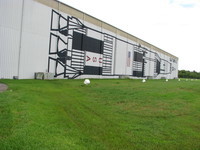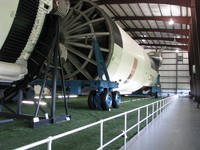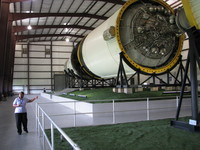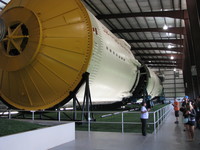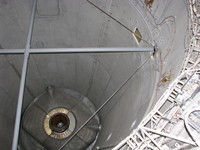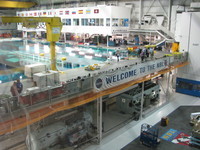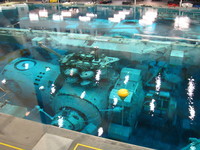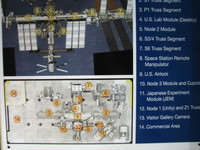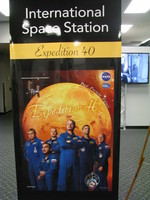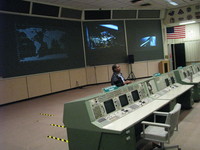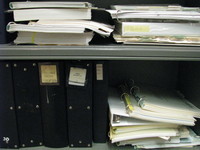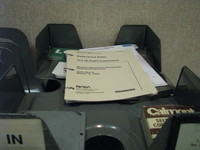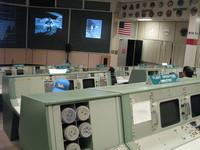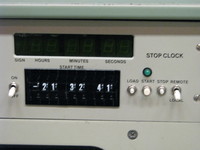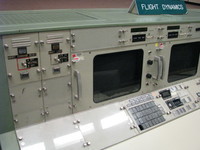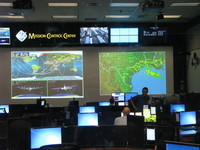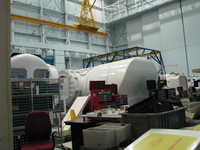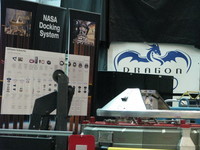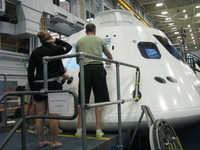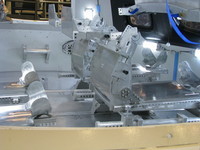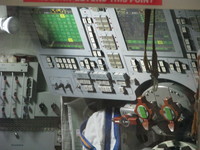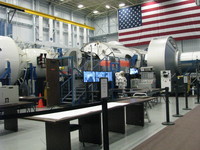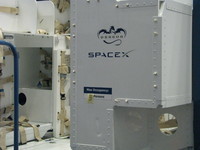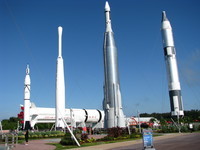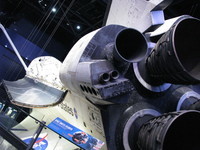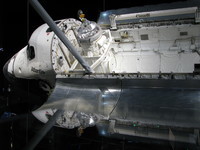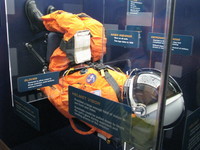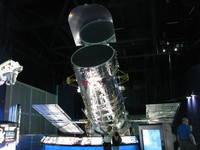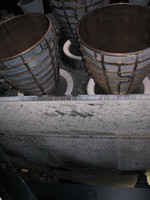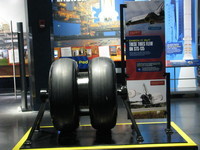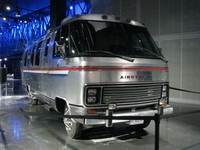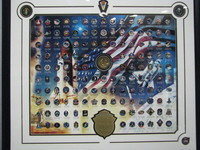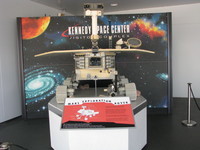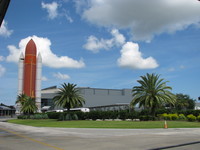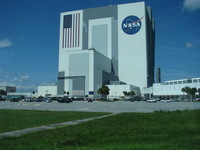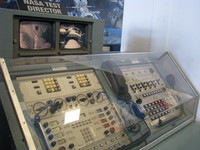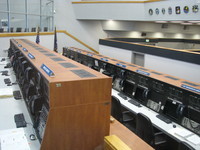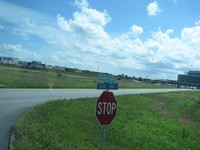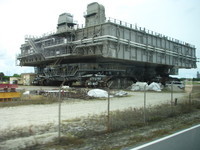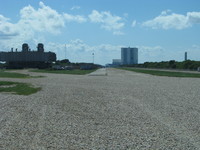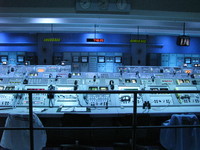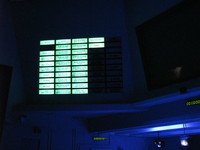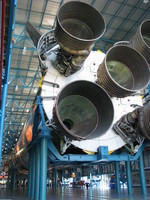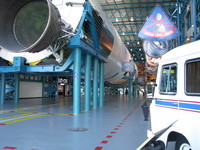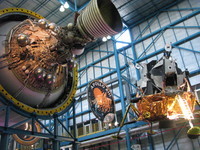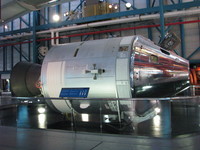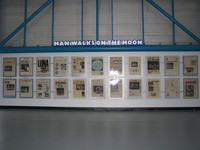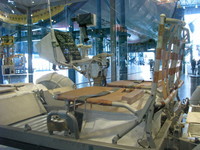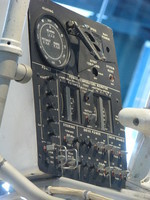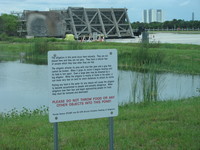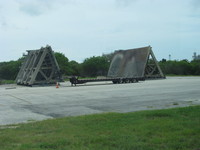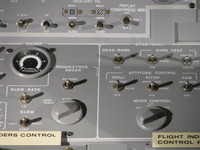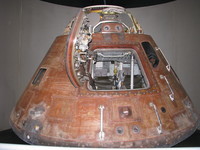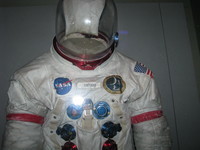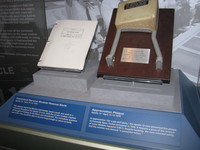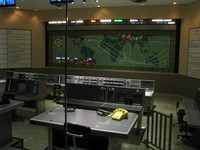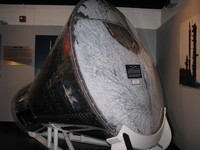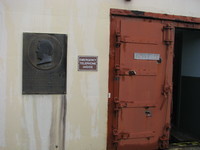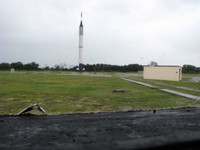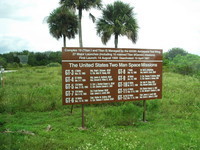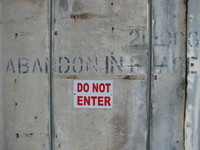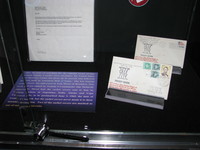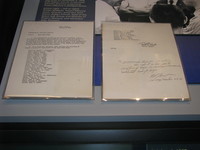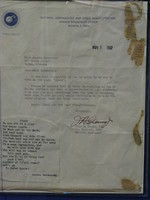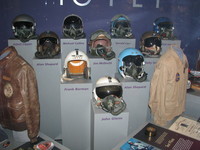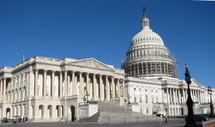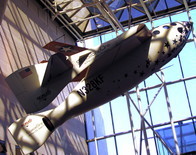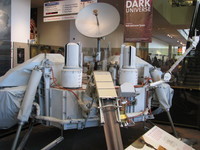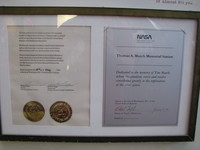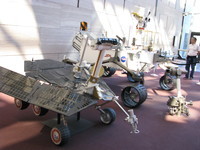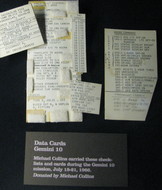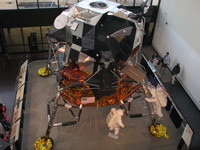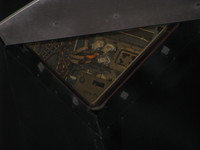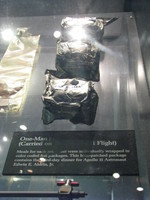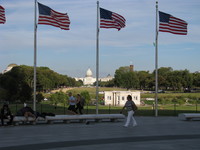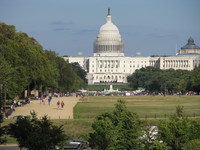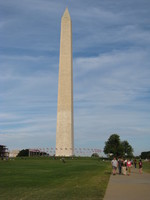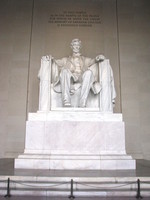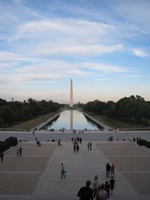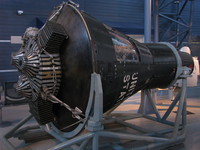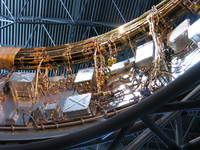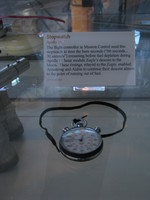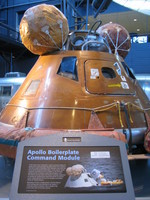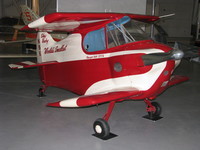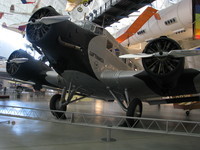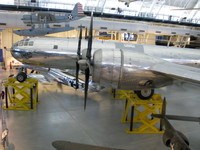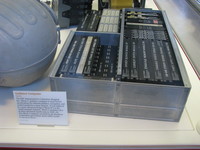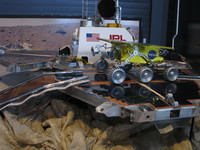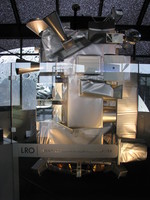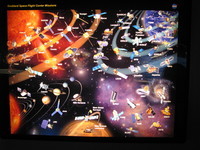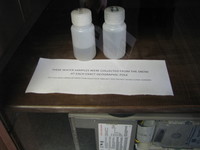
Space Holiday 2014
| Intro | ||
| Photos | ||
| Olympiads | ||
| New Zealand | ||
| Burning Seed 2010 | ||
| Space Holiday 2014 | ||
| Wettbewerbe | ||
| Kontakt | ||
My Space Holiday fulfilled my life long dream to visit aerospace centers in the US and Europe and meet some of the people who work there.
On this trip, I saw the first three Mercury-Redstone capsules, two of the three remaining Saturn V moon rockets, and all three remaining Space Shuttles (not counting Enterprise which never made it to space). Since I love unmanned (robotic) exploration of the solar system, my personal highlight was the opportunity to visit JPL on three separate occasions on the same day and to meet some of the amazing people who work there, including some of my personal heroes.
Locations visited
Between 6 Sep and 5 Oct 2014, I visited:
- Los Angeles, CA (California Science Center, Mt Wilson & Griffith Observatories, JPL, Caltech, SpaceX),
- Mountain View, CA (NASA Ames Research Center),
- Houston, TX (Johnson Space Center),
- Titusville, FL (Kennedy Space Center/Cape Canaveral, Astronaut hall of fame, and launch of SpaceX's CRS-4 mission to resupply the ISS),
- Washington, DC (Smithsonian National Air and Space Musem, Udvar-Hazy Center, Goddard Space Flight Center; also some government sights),
- Friedrichshafen, Darmstadt and Berlin, Germany (EADS/Astrium, ESOC/European Space Operations Center, and DLR),
- Noordwijk, The Netherlands (ESTEC/European Space Technology Center for it's Open Day).
Rough review of US aerospace centers visited
The big centers in Houston (Johnson Space Center) and Florida (Kennedy Space Center) are very well equipped to handle the influx of visitors and have some of the best tours and historical hardware (KSC is the only place where you can see both a Space Shuttle and a Saturn V). The downside is that they commercially cater for relatively nontechnical tourists: their tours are expensive and their big souvenir shops almost exclusively sell tacky stuff such as I need my space and Failure is not an option T-Shirts.
While they don't have as big pieces of historic hardware, both JPL and SpaceX are serious engineering porn. While JPL only had two very small stores and SpaceX had none, I found their products more appealing because I liked how they celebrated proud engineering/science milestones. Unlike KSC/JSC, you'd still feel good wearing them if you worked there. Caltech as a university doesn't cater to visitor, but it's fun to go in and see the names of all the famous scientists on the doors.
Lastly, NASA Ames Research Center and Goddard Space Flight Center are not open to the public and each only have a small visitor center. Don't bother visiting unless you're already passing through.
Photos (US portion of the trip)
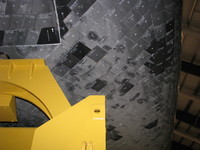
Thermal protection titles on Endeavour's belly.
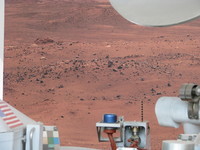
My not very successful attempt to reproduce this famous photo's perspective with the model.
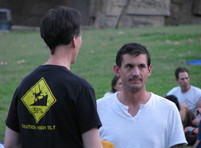
Scott's highly accurate T-Shirt refers to the 58% (~ 30°) slope that Spirit encountered at Winter Haven 3. Although MER was designed for a maximum tilt of 45° along either axis, it was usually kept below 25°. I repeatedly misread the 58% as an incredible 58°; thanks Scott for correcting!
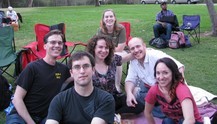
One of the best parts about my trip was the opportunity to meet these awesome professional space geeks who generously shared their insights and enthusiasm with me.
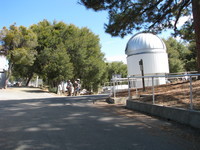
At Mt Wilson observatory; the small dome in the right background is part of the CHARA Interferometric Array.
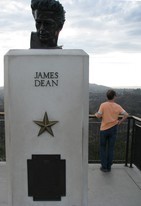
James Dean bust outside Griffith Observatory; apparently, scenes from Rebel without a cause were filmed here.
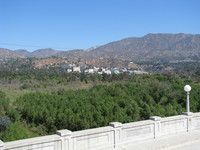
View onto the whole JPL campus; when JPL's present location was established (because those crazy rocket science geeks couldn't be trusted to not accidentally blow up Caltech/Pasadena), this area was still somewhat remote; today it is located just outside the Pasadena city limits.
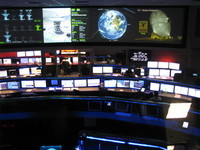
Inside JPL's space flight ops facility (sorry about the blurry picture). The Doug in the picture at the rear right is Doug Ellison. The room from which the ops team monitored the landing of all mars rovers so far (Sojourner, MER, Tango Delta Nominal MSL) is just to the left.
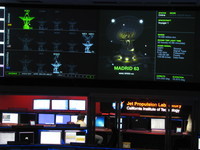
Closeup of the left background from JPL's space flight operations room, showing that the Deep Space Network's antenna in Madrid (details and picture shown) is currently talking to Voyager 1 (VGR1), and Goldstone is talking to Mars Reconnaissance Orbiter (MRO, home of HiRISE) and Mars Express (MEX).
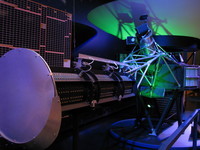
1:1 scale Voyager model in the von Kármán Auditorium. Von Kármán presenters commonly refer to these models; since they're not visible on the recorded video, I was glad to finally see them myself.
I asked the tour guide why Voyager's RTG sits so far from the instruments (is it to increase the moment of inertia, to keep the instruments away from the radiation, to balance the mass of the instruments around a center of gravity on the antenna, ...)? If you know, I'm curious!
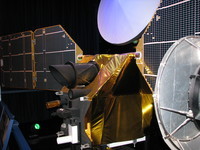
Mars Reconnaissance Orbiter with HiRISE (in the big black cylinder just to the left of the image center).
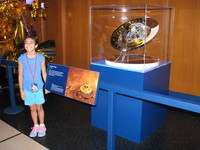
A 1:4 scale model of Huygens; judging by her enthuiasm, this girl might be a serious space geek and future JPL star.
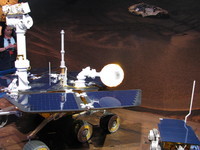
MER and Sojourner models (I think these were near the entrance). The circular reflective structure is MER's high gain antenna, and the thin vertical structure is the low gain (omnidirectional) antenna.
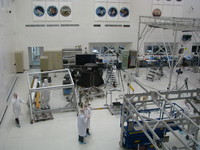
The famous JPL clean room, with insignias from past missions mounted to the wall. What struck me the most when comparing JPL's vs. SpaceX's clean room was that SpaceX's looked much more crammed and busy with parallel work on an assembly line of multiple spacecraft.
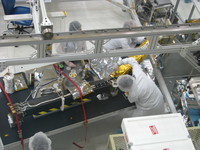
Engineer working on SMAP (Soil Moisture Active Passive)'s lower boom. SMAP launched 4.5 months later on 31 Jan 2015 (exactly 54 years after Ham's Mercury-Redstone 2).
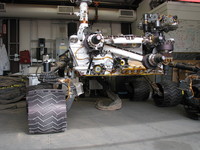
Curiosity's twin up close. Her wheels (with the JPL morse code visible) and her 30kg arm are impressive. The yellow tape is kapton tape; I'd come across the term many times in books, but had never seen it in real life.
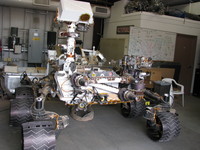
This angle shows the mast with ChemCam. The Mastcams are the little cylinders just below the head. The whiteboard in the background probably contains super secret JPL plans :)
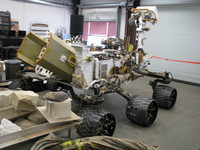
Curiosity's bum, where the RTG would normally be. On this version, the power and thermal control is provided externally via cables and pipes :)
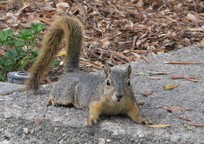
I loved this squirrel although it appeared anxious about my presence. As far as I know, squirrels haven't been introduced to Australia & NZ.
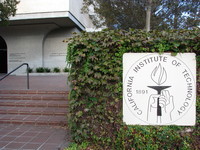
One of the Mudd buildings, home to part of the Geological and Planetary Sciences. This is where the lecturers of the (highly recommended) Science of the Solar System class on Coursera have their offices.
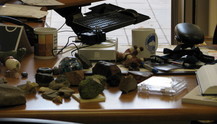
Prof. Brown's desk with several asteroid and other samples. The SciSolSys pallasite is in the plastic case in the right foreground; the SciSolSys coffee mug in the left background.
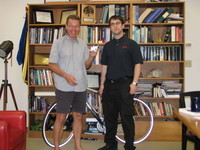
Prof. Brown, me, the pallasite, and the office background we know from the SciSolSys lecture videos!
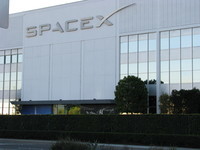
SpaceX, 1 Rocket Rd, Hawthorne, CA. J very generously took an hour out of his very busy work day to show me around the factory (sadly but understandably, photos inside were not permitted); thank you so much! Like an award in the reception area said, SpaceX are doing the right things for the right reasons - an inspiring place.
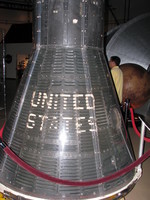
Mercury-Redstone 1 capsule used on MR-1 and MR-1A, the predecessor of Ham's MR-2 in preparation for the later manned flights starting with Alan Shepard's MR-3. This capsule is at the NASA Ames Visitor Center in Mountain View, which was otherwise disappointing.
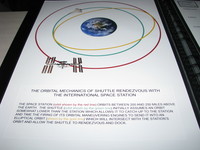
This figure at the NASA Ames Visitor Center suggests that a Hohmann Transfer orbit intersects the lower orbit. This is wrong: The yellow orbit should remain strictly outside the green orbit apart from the one place where they touch.
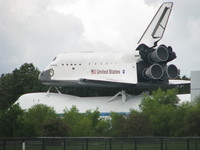
Sadly, Johnson Space Center didn't get any of the remaining Space Shuttles. It's fair that they make up for it with these Fake Shuttles; the fact that they have quite a few and that they fail to draw attention to the fact that they are not real, however, is a little bit pathetic.
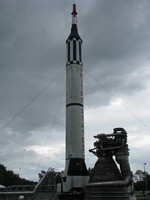
JSC's version of the Rocket Garden with a Mercury-Redstone rocket and a F-1 engine. The F-1 remain the largest single-chamber liquid fuel engine ever flown; five of them powered the Saturn V's first stage. I loved this article about how some engineers reverse engineered an F-1 engine and hot fired its gas generator (video).
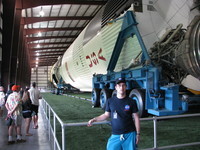
Me in front of the gigantic (110.6m long) Saturn V at JSC. That three Saturn Vs remain today is probably the best thing that came out of the premature cut of the Apollo program's funding.
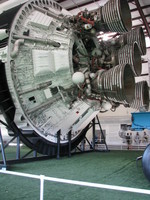
Five J-2 engines on the Saturn V's second stage, S-II. This one here is the very last S-II ever built, namely S-II-15.
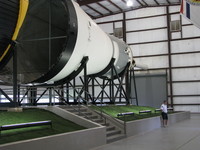
View up the Spacecraft Lunar Module Adapter (SLA) that would have housed the lunar module (LM/LEM). During the coast to the moon, the cylindrical command/service module (with the RCS thrusters along orthogonal axes) in front of it would turn around and extract the LM from the SLA.
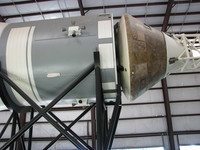
Closeup of the service module (grey) and command module (rusty). The SM provides propulsion and electrical power/consumables; the CM is the only part that returns to Earth. The launch escape system (far right) would be jettisoned at some point during ascent from the Earth.
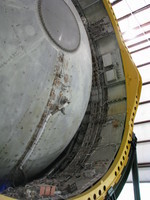
Round tanks use less material and are thus lighter than other shapes holding the same volume at the same pressure.
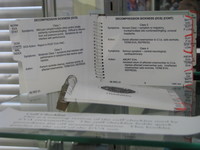
Checklist for decompression sickness. Divers with safety, utility and camera roles work in 2 hour shifts to support each astronaut during their training in the Neutral Buoyancy Laboratory (NBL).
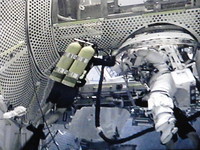
According to our guide, the astronaut training here (photo from a live TV camera) was Italian astronaut Samantha Cristoforetti who flew to the ISS two months later as part of Expedition 42; her brother happens to be a distant coworker of mine.
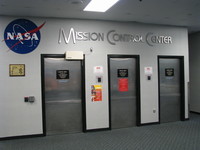
This building houses not only the modern-day mission operations control rooms (MOCRs) but also the historical MOCRs from the Apollo era.
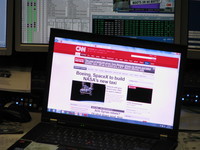
Incredibly, we were sitting behind Mission Control at 1pm on September 16, 2014, when NASA announced Boeing/SpaceX as the partners for $4.2/2.6 billion contracts to launch astronauts to the ISS from US soil again by 2017. This picture shows an engineer's laptop following the news as they unfolded.
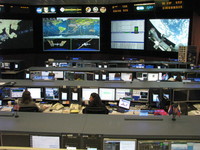
Johnson Space Center's Mission Control Center. I had thought that MCC was the building and that the individual rooms were called Mission Operations Control Rooms (MOCRs), but I must have gotten the terminology wrong or perhaps this is just for the tourists; not sure.
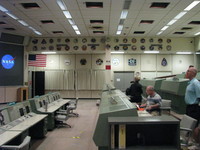
The very consoles where Gene Kranz (Flight Director), Charlie Duke (Capsule Communicator), Charles Deiterich (Retrofire Officer) etc. followed the first manned landing on the Moon in July 1969.
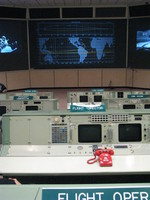
I didn't know about the red phone for the Flight Director (Gene Kranz), but I assume it is historic.
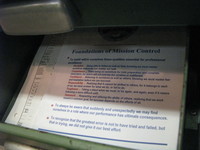
I love that Mission Control had posted values, although, had I written this, I'd have put a mission statement at the top as a context for these values.
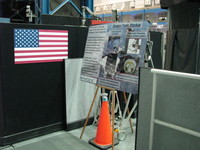
Moving on to the Space Vehicle Mockup Facility (SVMF) - here, a sign for a mockup of the trunk of SpaceX's Dragon spacecraft.
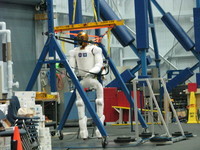
A Robonaut (not sure if the current iteration is sufficiently advanced to actually provide value to ISS residents).
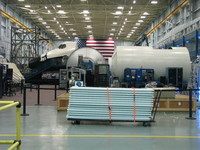
I'm kind of surprised that this Space Shuttle cockpit mock-up remains at Johnson Space Center; perhaps it plays a similar role to the Fake Shuttles outside :)
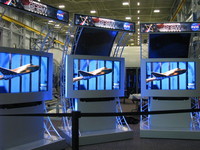
When I took this photo, the advertisement for Sierra Nevada's Dream Chaser competitor was already obsolete by a few minutes. Sierra Nevada later sued NASA alleging an inappropriate process for the award of the contract to Boeing/SpaceX.
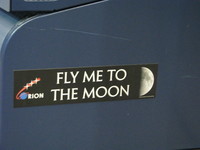
It actually seems kind of doubtful whether an Orion spacecraft will ever get to the Moon, but we'll see!
![I loved this infographic of Significant Incidents and Close Calls in Human Spaceflight [full PDF version].](albums/2014space/thumb_113.jpg)
I loved this infographic of Significant Incidents and Close Calls in Human Spaceflight [full PDF version].
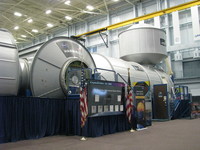
The Harmony and Kibo modules; Zarya (Russian built but US owned, the very first ISS module launched) is nearby.
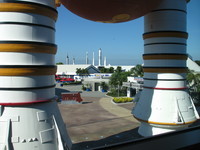
View out of the building that houses the Space Shuttle Atlantis. The life size mock-up of Space Shuttle solid rocket boosters (visible in the foreground) and external tank looks impressive from all directions.
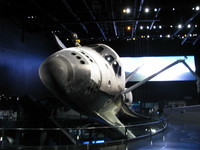
The Space Shuttle Atlantis. After watching a short video clip about a Space Shuttle launch, the screen becomes translucent and the real Shuttle, from the perspective picture here, is revealed behind. I loved this very well thought out and professional design. It seems though that after driving for hours and paying big bucks to get into the Space Center, people still get bored of one of the prime exhibits very quickly: The video clip is on a ~ 6 minute loop, so new visitors enter the room every 6 minutes. After ~ 3-4 minutes almost all have left again, leaving space for photos such as this one.
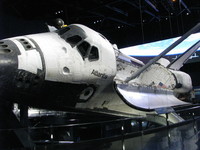
It was interesting how much the presentation of the three Space Shuttles in their respective aerospace museums differs, and this was my favourite.
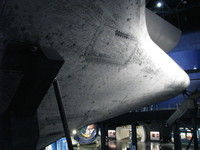
Atlantis's belly with the thermal protection tiles. As a neat detail, a KSC employee nearby offered a (amazingly light!) sample to touch, the first time I had held one in my hand.
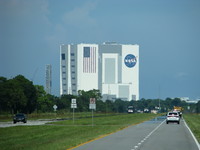
First view onto the Vehicle/Vertical Assembly Building (VAB) which was built in the 60s for the Saturn V moon rocket and remains the largest single room in the world.
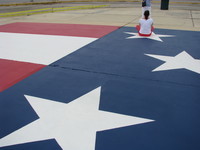
A 1:1 scale section of the US flag from the VAB for scale; each star is nearly the size of a person.
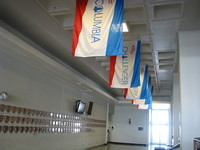
Inside the launch control center (as opposed to mission/flight control center in Houston which would take over after launch). The wall on the left carries insignia from all Apollo and Space Shuttle/STS launches; I'm not sure if any other missions are represented.
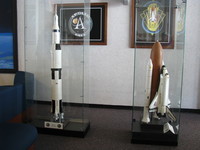
Saturn V and Space Shuttle models, a little nicer than the junk they're selling in the souvenir shop.
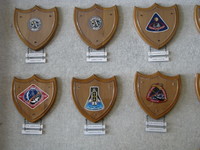
Close-up of some of the mission patches and launch/landing dates. Apollo 8's logo is one of my favourites.
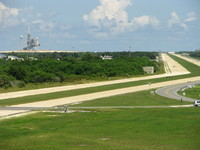
View onto Launch Complex 39(A?) with structures from the Space Shuttle era. I vividly remember the first time I saw these memorable structures (on LC-39B) during and after the Space Shuttle Discovery's STS-26 Return to Flight launch in 1988, which I taped and followed as a child.
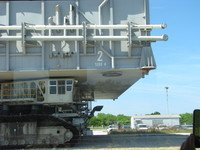
The mighty crawler, built in the 1960s, that carries upright launch vehicles (including the Saturn V) from the VAB to the launch pad.
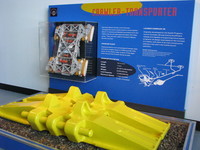
For scale, this is a single one of the crawler's chain segments (photo taken in the Saturn V center).
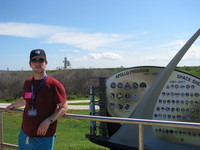
Me with LC-39A in the background, where all Apollo moon landing missions and some Space Shuttle missions launched.
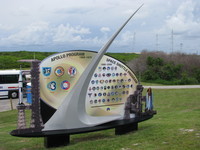
LC-39B, a bit further to the right, launched some other Apollo missions (the Apollo 10 dress rehearsal, Skylab and the Apollo-Soyuz test project) and the other half of the Space Shuttle missions.
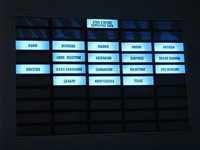
Note that this Apollo era display still mentions Honeysuckle Creek (later replaced with Tidbinbilla) and Carnarvon (later closed) tracking stations.
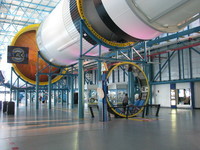
The Saturn V carried an independent guidance system for the ascent stage in the ring-shaped Instrument Unit (IU) standing on the floor here; this design proved critical when Apollo 12 was hit by lightning that knocked out all command module systems (but not the IU). For some reason, the unit shown here is a replica while the Udvar-Hazy center in Washington has an original; why isn't that one here?!?
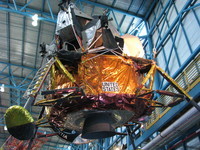
Lunar Module, with the descent stage wrapped in yellow/orange Kapton for thermal insulation.
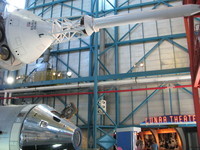
Top: Command Module mock-up with the Launch Escape System on the far right.
Bottom: (possibly original?) Command and Service Module.
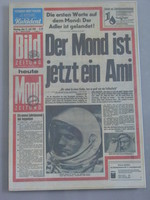
German BILD from 21 July 1969, titled The man in the moon is now an American, reminiscent of their Wir sind Papst! (We are pope!) on the election of German Cardinal Ratzinger as pope Benedict XVI in 2005.
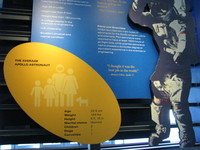
The advertising deal that got the Apollo astronauts free corvette cars and sometimes houses is one of the slightly less proud aspects of Apollo history.
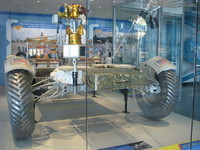
The lunar rovers were part of the final (J-class) Apollo Moon landings. They were unfolded from their space on the Lunar Module's descent stage and remained on the Moon. A great episode of the British TV series Moon Machines discussed their design in detail.
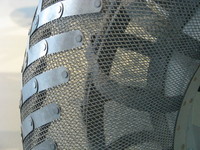
Close-up of the lunar rover's mesh tires that were designed to work in vaccum and across the occasional sharp edges (no atmosphere or water that would cause erosion) of moon rocks.
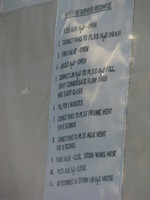
Checklist for refilling the water reservoir on the Apollo space suits. Water was one of the most critical consumables since it needed to be evaporated into space to get rid of the astronaut's waste heat. Note that because the Moon has no atmosphere, heat can only be lost through radiation (minuscule at body temperatures), not convection (much faster).
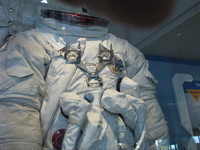
The space suit that Gene Cernan wore on the Moon during Apollo 17, with grey lunar dust still adhering to it.
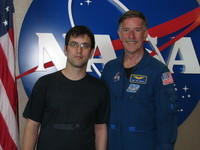
Astronaut Jimmy Reilly, who held the Lunch with an astronaut events that week. I didn't have high expectations, but the event was actually quite well done (Jimmy was charming).
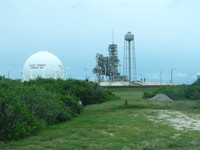
LC-39A with the liquefied hydrogen tank in the foreground and some structures left over from the Space Shuttle era. For safety, the liquefied oxygen tank is kept on the other side.
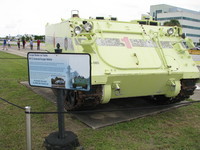
Armored vehicle that stood ready during Apollo/STS launches to help the crew escape safely in an emergency.
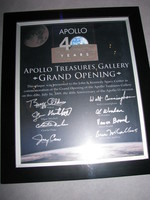
Like so many other places, the introverted Neil Armstrong's signature is missing here. For some reason, Michael Collins, who wrote one of my favourite Apollo books (Carrying the Fire) is missing too; however, Al Worden, who wrote the other great Apollo memory (Falling to Earth) is present.
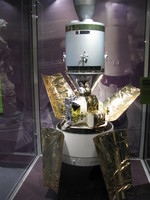
Model demonstrating the inverted CSM's maneuver to retrieve the Lunar Model from the spent S-IVB during the coast to the Moon.
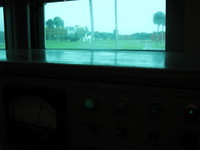
View out of the original block house from which Mercury-Redstone 3 AKA Freedom 7 was launched after Alan Shepard's famous, impatient request to light this candle.
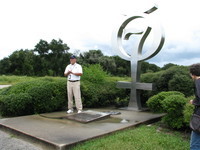
Memory to the Mercury program and its original 7 astronauts. The monument was unveiled near Launch Complex 14 in 1964 and contains a time capsule intended to be opened after 500 years, in 2464.
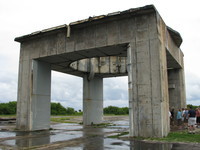
Launch Complex 34, the site of the Apollo 1 fire that claimed astronauts Grissom, White, and Chaffee.
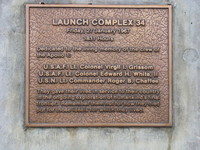
Memorial plaque on Launch Complex 34. This is also the site of an annual memorial service lead until 2014 (?) by Grissom (?)'s wife.
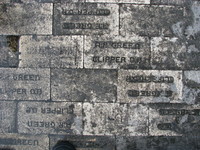
Fire resistant bricks underneath Launch Complex 34, covered in soot from Saturn I and IB launches in the 1960s.
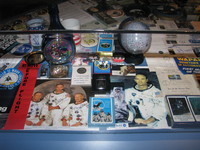
Apollo 11 memorabilia. The big photo to the lower left is noteworthy in that it includes Neil Armstrong's signature. However, Aldrin already signed with the Buzz Aldrin he also used in all of his later autographs, distinct from his Edwin E. Aldrin, Jr. signature on the plaque left on the Moon.
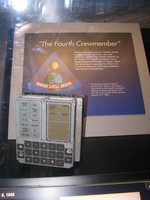
The original DSKY from Apollo 10's guidance computer! You may also be interested in this guidance computer emulator.
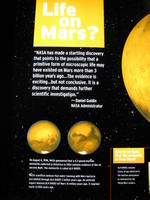
By 2014, the Astronaut Hall of Fame obviously hadn't yet gotten around to mentioning that this claim is far from universally believed among NASA scientists...
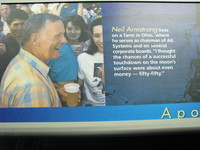
It's also a shame that the Astronaut Hall of Fame still has Neil Armstrong living on a farm in Ohio; he died over two years before this photo was taken.
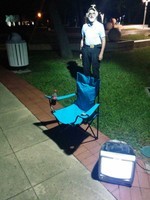
Meet Ozzie Osband, the person whom we have to thank for the Space Coast's area code 321. Just three days after reading his story, I met him at Space View Park while waiting to see my very first rocket launch: SpaceX CRS-4. Ozzie watches launches all the time and brought a TV for additional launch coverage.
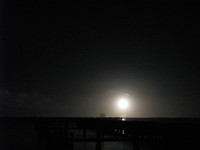
The launch of SpaceX CRS-4.
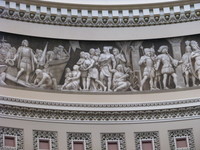
The magnificent Frieze of American History in the United States Capitol Rotunda. The figures, which are painted with only white, black and brown paint on a flat background, look unbelievable three-dimensional (a technique that's apparently called trompe-l'œil).

The original Apollo 11 Command Module, which contained everything that returned from the first manned Moon landing. It now lives in the Smithsonian's National Air and Space Museum in Washington, D.C.
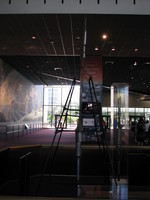
Replica (with some original parts?) of Goddard's invention: the world's first liquid-fuelled rocket.
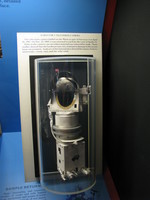
The original Surveyor 3 television camera that was retrieved from the Moon by Apollo 12. After the return, viable bacteria were found on the camera; however, the camera was probably contaminated with the bacteria after its return rather than before its depature.
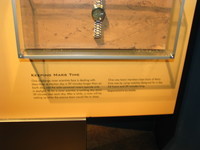
One of the original Mars clocks built by Garo Anserlian and distributed to Mars Exploration Rover team members. Scott Maxwell also wrote an Android app that tracks time at the respective Mars rovers' landing sites.
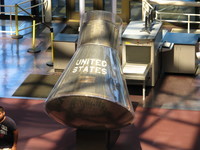
The Mercury-Redstone 3 (MR-3) capsule that took John Glenn on his flight with call sign Freedom 7. This was the immediate successor to the MR-1 and MR-2 capsule pictured further up.
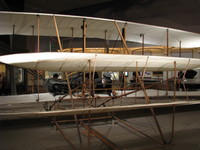
The Wright Flyer, with original wooden parts, the first successful heavier-than-air aircraft. This very plane took the Wright Brothers on their pioneering flight near Kitty Hawk in 1903.
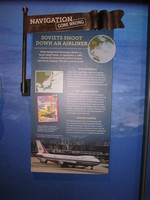
Information about Korean Air flight 007, a civilian passenger plane that was shot down by the Soviets when it accidentally entered their airspace. The sign fails to mention Iran Air Flight 655 which was shot down by the U.S. Navy in Iranian airspace while on its usual flight path.
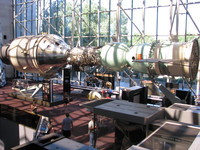
This awesome display of the Apollo-Soyuz test project includes the original testing (unflown) Apollo command & service modules from that mission. The real (flown) command module is at the California Science Center (see photo #005 above).
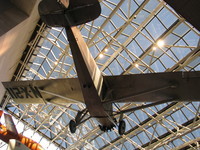
Charles Lindbergh's plane Spirit of St. Louis which achieved the first non-stop flight across the Atlantic.
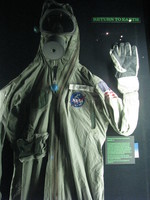
A Biological Isolation Garment (BIG) designed to prevent Earth's contamination with hypothetical lunal microbes after the early Moon landing missions (up to Apollo 14). This specimen was worn by Buzz Aldrin from Apollo 11's landing in the Pacific Ocean to his arrival in the mobile quarantine facility on board the USS Hornet.
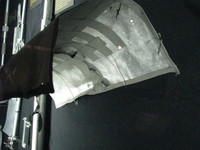
On Apollo 17, one of the lunar rover's fender broke which lead to the astronauts being covered in dust every time they moved the rover. Harrison Schmitt fashioned this replacement out of lunar maps that they had available.
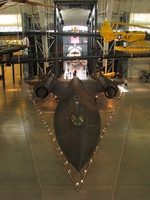
A SR-71 Blackbird, an innovative long-range, high-speed and high-altitude spy plane used for over 30 years in the late 20th century. The Space Shuttle Discovery is in the background.
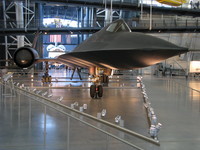
The Udvar-Hazy center's SR-71 Blackbird from up close, with the Space Shuttle Discovery in the background.
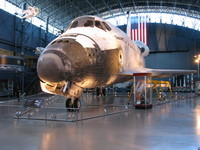
Discovery is the last Space Shuttle that I saw on my trip, and also the one I most looked forward to seeing because of the vivid memories I had of it from my childhood. Note the somewhat out of place Saturn V Instrument Unit at the far left.
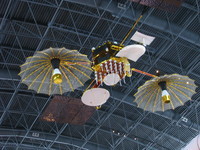
A replica of the tracking and data relay satellite (TDRS) which Discovery carried on its seventh flight, STS-26 in 1988, which made a huge impression on me as a child. This was the Return to Flight mission after the Challenger accident in 1986.
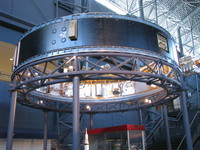
The Saturn V Instrument Unit at the Udvar-Hazy center. It would be a much better fit for the Kennedy Space Center's collection; I hope they'll transfer it one day.
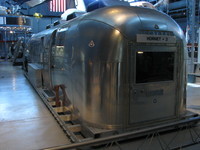
The Mobile Quarantine Facility that waited on board the USS Hornet at the conclusion of the first Moon landing, Apollo 11. The Hornet + 3 refers to the fact that they were welcoming three astronauts.
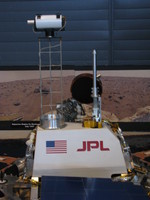
A view of the top of Pathfinder's mast with Imager for Mars Pathfinder (IMP), its only camera. The high gain (flat and round) and omnidirectional (thin vertical cylinder) antennas at visible just right of the center towards the bottom.
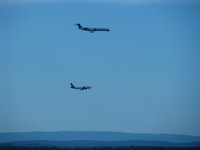
The Udvar-Hazy Center is right next to and with a view onto Washington Dulles International Airport. These two planes landed simultaneously on two parallel runways.
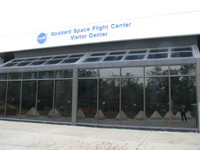
Outside the Goddard Space Flight Center near Washington, D.C. Like NASA Ames, this very small visitor center doesn't offer much appeal unless you otherwise happen to be in the area.
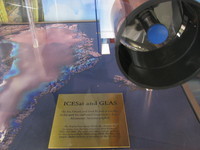
In spite of the similar name, it turned out that ICESat is entirely different from the International Cometary Explorer (ICE) formerly known as ISEE-3 which sparked a successful attempt to reestablish communication when it passed close to the Earth in mid 2014. Since that was 36 years after its original launch and long after the end of its primary and extended mission, the ISEE-3 Reboot Project had to rely on software defined radio to replace the original communication hardware.

Turns out that Goddard Space Flight Center also has a replica of Goddard's liquid-fuel rocket. It kind of makes sense, with him being the namesake and so on...
| Last change: 2024-02-17 22:30:56 GMT+0100 |
